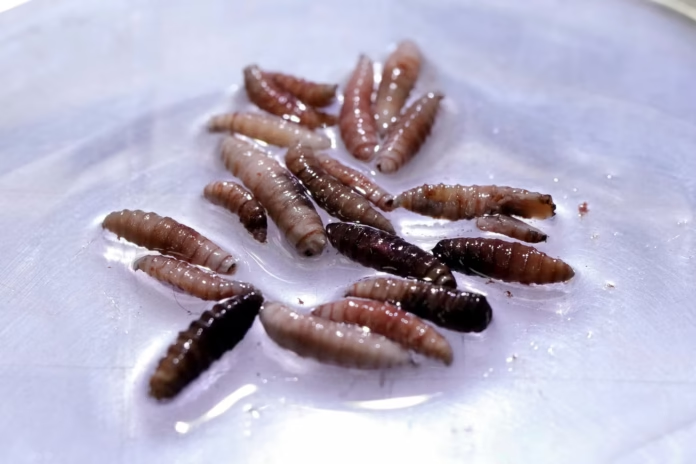Table of Contents
Rare Flesh-Eating Parasite Confirmed in Maryland
Health officials have confirmed the first U.S. case of travel-associated New World screwworm myiasis, a flesh-eating parasite, in a Maryland resident who recently returned from El Salvador. The U.S. Department of Health and Human Services (HHS) confirmed the diagnosis on August 4, marking a rare detection of the flesh-eating parasite on American soil.
According to HHS spokesperson Andrew Nixon, the risk to the broader U.S. public remains “very low.” The infected patient has since fully recovered, and the Maryland Department of Health has found no evidence of transmission to other individuals or animals.

Global Outbreak Spreads Across Central America
The detection comes as a broader screwworm outbreak sweeps across Central America, affecting Belize, Costa Rica, El Salvador, Guatemala, Honduras, Mexico, Nicaragua, and Panama since early 2023.
Late last year, the parasite was confirmed in southern Mexico, sparking alarm among U.S. agricultural officials. In May 2025, the U.S. even closed cattle and livestock import ports along the Mexico border to prevent the parasite from spreading north.
Why This Flesh-Eating Parasite Is So Dangerous
The New World screwworm fly (Cochliomyia hominivorax) is unlike most blow flies. Instead of feeding on dead tissue, its larvae infest living warm-blooded animals, including cattle, horses, pets, and humans.
“After mating, the female fly lays up to 300 eggs in an open wound,” explained Dr. Phillip Kaufman, head of entomology at Texas A&M University. “Within 24 hours, the eggs hatch into maggots that burrow deep into living flesh, creating massive wounds.”
If left untreated, infestations can kill an animal in just one to two weeks. The flesh-eating parasite not only devastates livestock but also threatens the U.S. food supply chain.
Federal Response: Sterile Flies and Emergency Measures
To prevent a full-scale resurgence, the U.S. Department of Agriculture (USDA) announced it will construct a new sterile fly production facility in Edinburg, Texas, capable of releasing up to 300 million sterilized flies per week. This method, first deployed in the 1960s and 1970s, was instrumental in eradicating screwworms from U.S. soil.
“The construction of a domestic sterile fly production facility will ensure the United States continues to lead the way in combating this devastating pest,” said USDA Secretary Brooke Rollins. “If our ranchers are overrun by foreign pests, then we cannot feed ourselves.”
Alongside this, the USDA is investing $100 million into new control technologies, training screwworm detection dogs, and deploying mounted patrol officers, known as “Tick Riders,” to monitor border regions.
Meanwhile, the Food and Drug Administration (FDA) has been granted emergency powers to authorize animal drugs for screwworm treatment and prevention, since no approved drugs currently exist in the U.S.
Experts and Community Reactions
The case has stirred concern among both medical and agricultural communities.
“These flies will land on an animal with even the smallest scratch,” warned Dr. Daniel Griffin, infectious disease specialist at Columbia University. “When the eggs hatch, the larvae essentially turn living tissue into Swiss cheese.”
Farmers and ranchers, already facing livestock trade restrictions, are bracing for potential economic consequences.
“One outbreak in U.S. herds could cripple our cattle industry,” said Robert Hayes, a Texas rancher. “We can’t afford to take chances.”
Why It Matters for Public Health and Agriculture
The Maryland case highlights the growing global health risks linked to travel and trade. While the immediate threat to Americans is considered low, the parasite’s ability to spread silently through animals poses a serious long-term concern.
The outbreak also underscores the fragility of the food supply chain, as even a small incursion of screwworms into U.S. herds could devastate agriculture and raise food prices nationwide.
Looking Forward: Containment and Vigilance
For now, the U.S. remains screwworm-free beyond this isolated case. But with infestations spreading in Central America and Mexico, experts warn that constant surveillance is key.
The coming months will test whether new containment strategies, sterile fly releases, and border patrols can prevent the flesh-eating parasite from re-establishing in the U.S.
While the Maryland patient has recovered, the broader message is clear: global outbreaks don’t stop at borders, and the fight against invasive parasites is far from over.



